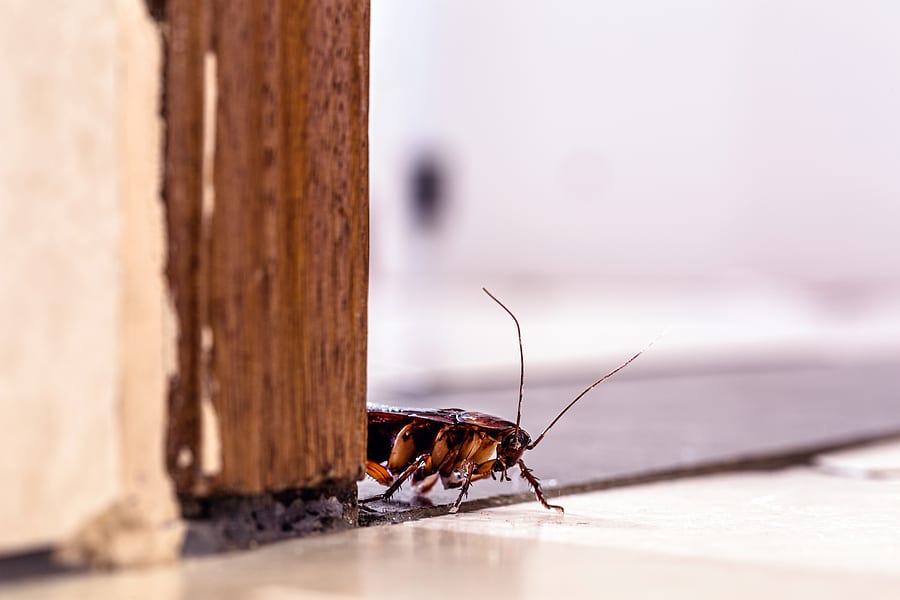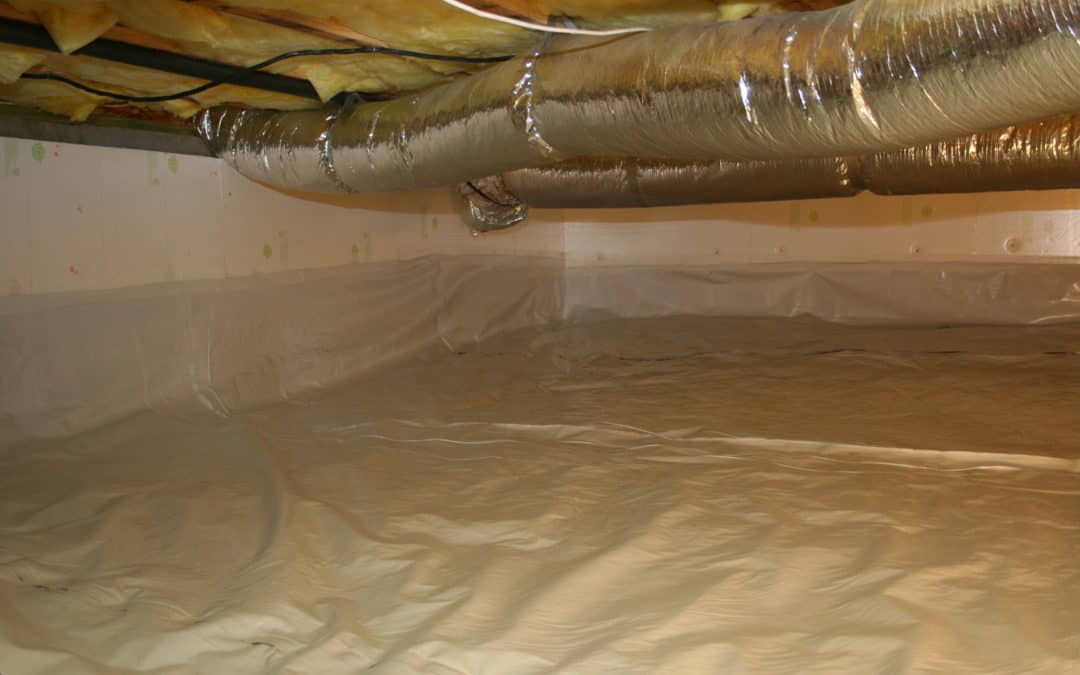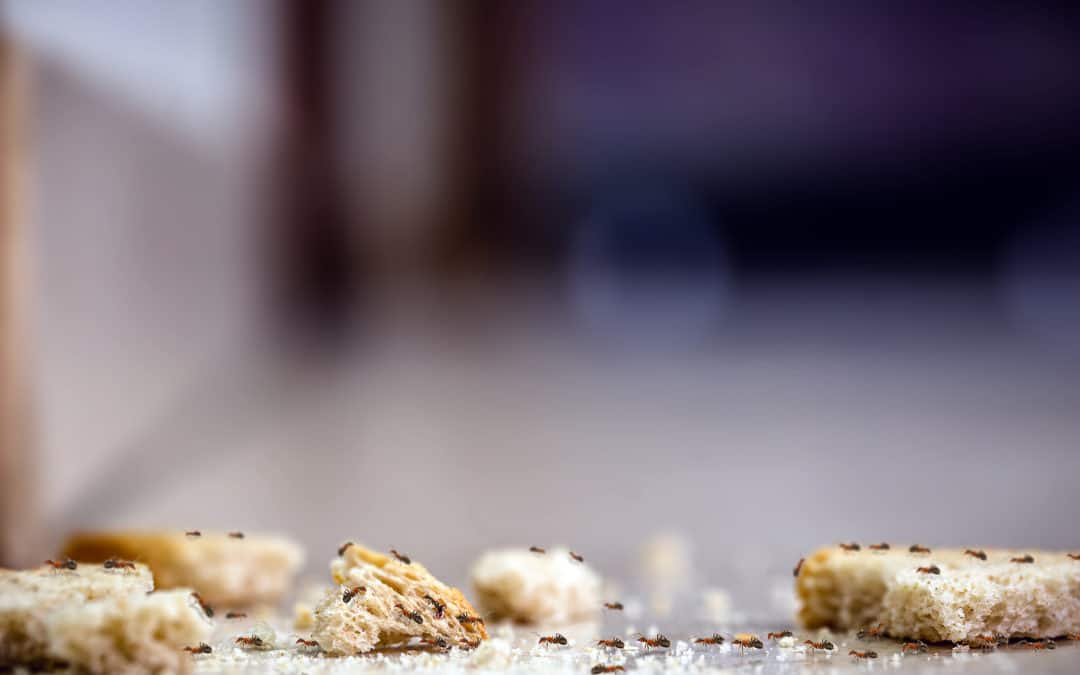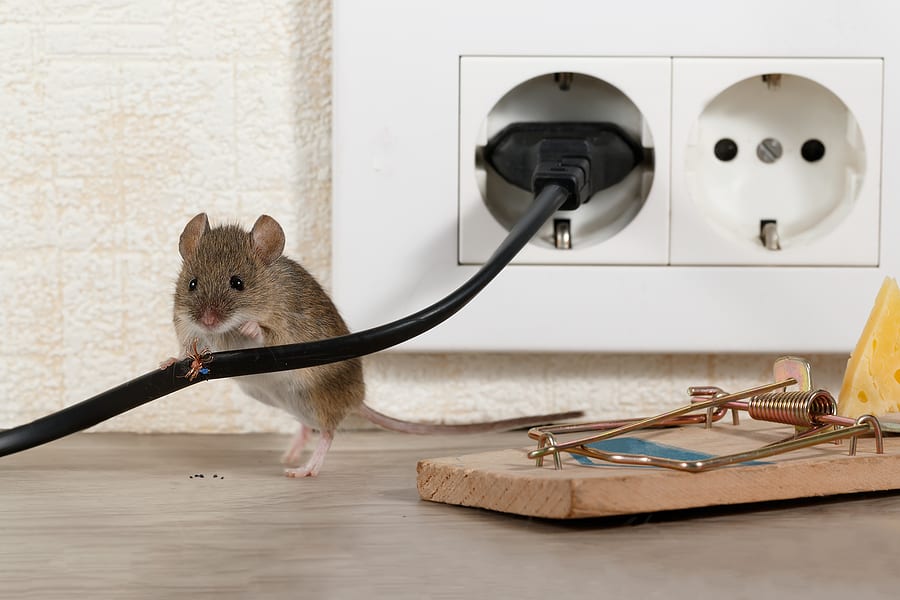READY TO GET STARTED?
REQUEST A FREE ESTIMATE
Fill out the form below or call (336) 226-1448 for a free, no-obligation estimate.

With warm weather here, it’s the perfect time to do some spring cleaning. A great place to start is your kitchen pantry. Pantry pests tend to be less obvious than other common household pests. You might not see or notice them until there’s an infestation or when they leave the food source to fly into other areas of your home.
The good news is that pantry pests don’t cause any structural damage to your home and don’t pose much of a threat to people or pets. However, they can penetrate carboard and plastic, leaving your goods vulnerable to infestations. Once a good source is affected, the pests multiply rapidly and will most likely spread to other food items if not found and controlled immediately.
You will most likely notice pantry pests when they leave the food source and go to other areas of your home. You might see small beetle-like pests in cabinets or moths flying in the kitchen. If you suspect pantry pests, inspect your dried food immediately, throw out anything infested, and do a thorough cleaning of the entire area.
If you spot any pantry pests, it’s recommended to contact a pest control company so the pests can be properly identified. A pest professional will locate the pests, eliminate them, and provide suggestions on how to prevent a reoccurrence in the future.

During the wintertime, many homeowners worry less about pests that are common during the spring and summer months. Contrary to popular belief, some pests don’t just die off when it’s cold outside. Instead, they use their survival instincts to get through the winter. Below is a list of 4 common winter pests and what you can do to prevent them when warmer weather arrives.
Ants
Seeing ants inside of your home is typically uncommon during the winter months. However, they are still around. They are great at overwintering and preparing for the cold. Ants prepare for the colder weather in the fall where they indulge in lots of food. This preparation helps them put on fat so they can survive without eating for weeks at a time. When winter finally arrives, their body temperature and activity will decrease. Then, they will seal up their colonies that they build deep in the soil or under rocks. This is where they will stay until springtime arrives.
Bed Bugs
Bed bugs are active all year-round. This means that they will invade your home whether it’s warm or cold outside. They are resilient pests and can survive temperatures from nearly freezing to 122 degrees Fahrenheit. This makes them an extremely difficult pest to get rid of. Common signs of bed bugs can include rusty, reddish-brown stains on bed sheets or mattresses, bites on exposed skin when sleeping, and eggs or egg casings.
After coming home from traveling, make sure you unpack your clothes and put them directly into your washing machine to clean. Always inspect your luggage for bed bugs and use a vacuum to clean it before storing it away.
Cockroaches
Most cockroaches can survive year-round if they have access to a warm and moist environment. Unfortunately, this means that your home is the perfect place for these pests to inhabit. German cockroaches are the one species that are known to survive harsh weather conditions. When the cold hits, they are great at sneaking indoors through small gaps and holes.
Cockroaches prefer to live in humid habitats such as kitchens, bathrooms, and basements. To ensure they don’t infest your home, make sure to clean up any spills or food crumbs, vacuum often, and use weather stripping to seal doorways.
To help prevent these overwintering pests from invading your home once spring and summer hit, consider contacting your local pest control company. A trained professional can provide you with an inspection, prevention, and treatment plan.

It’s bad enough having to deal with cold winter weather outside. It’s even worse when the cold temperatures start to creep into your home. While heating systems work hard enough in the winter to keep our homes warm and comfortable, additional cold air seeping into your home makes them work harder. This can leave you with cold feet and a high energy bill! Let’s review the benefits of crawlspace enclosure for your North Carolina home.
Up to 50% of household air flows in from your crawlspace. If your crawlspace isn’t enclosed, it lets your heated or cooled air out and allows outdoor air in. This will cause your heating and cooling system to work overtime to compensate for the fluctuation in temperatures, which may cause you to still feel cold floors and inconsistent temperatures throughout your home. Also, these units burning more energy leads you to increased utility bills.
Crawlspace enclosure is like adding a liner to your pool to avoid leaks. Water vapor enters your crawlspace from the ground and can even seep through cement. Increased moisture can cause a handful of problems in your crawlspace and your home. Moisture attracts pests, degrades indoor air quality, can cause mold and mildew growth, warped floors, and structural damage. Adding a moisture barrier and dehumidifier is a great way to help keep moisture out of your crawlspace. Check out our list of crawlspace enclosure benefits:
Do you have an issue with moisture in your crawlspace? Contact a pest control company near you who can come out and inspect your crawlspace, identify potential areas of concern, and recommend the best treatment plan for your situation.

Ants are known for being one of the most common home invaders. As soon as they see an opening, they will invade your house and any food they can get their hands on. While they tend to enter homes during the winter, now is the perfect time to start putting preventive measures in the most common areas ants are found – the kitchen and bathroom!
The kitchen is an ideal place for ants to infest. These pests are constantly looking for a water source, and the kitchen is the perfect place to find it. If your kitchen isn’t cleaned frequently and thoroughly, ants will quickly invade. Below are a few ant prevention tips to help keep them out of your kitchen:
Along with the kitchen, your bathroom is highly vulnerable to an ant infestation. A bathroom is an attractive place for ants because they enjoy moisture and dark places. Carpenter ants will build their nest in damp areas, such as behind bathroom tiles or under sinks. To prevent ants from infesting your bathroom, take these preventative measures:
If you have noticed an invasion of ants inside of your home, consider calling your local pest control company. Trained service professionals will set you up with a prevention and ant control plan to help prevent these pests during peak ant season.

Many will debate which is more effective – professional pest control or do-it-yourself pest control. There’s a growing trend among homeowners who want to be able to tackle pest control themselves to save time and money. Regardless of the route you take, prevention is always key to controlling pests. Below are some effective DIY pest control tips to try:
Keep Everything Clean
A clean house is much less attractive and hospitable for pests. Cleaning any dirty dishes and food scraps out of the sink will help keep pests away. Also, wipe down your kitchen counters and surfaces daily. Store food and drinks in sealed plastic or glass containers. Empty your garbage cans regularly. Keep your grass mowed and make sure to get rid of weeds. Lastly, keep all shrubs and trees trimmed back so they aren’t touching your house.
Make Your Home Less Attractive to Pests
Pests will come into your home in search of 3 things: food, water, and shelter. If you’re able to eliminate these attractants, pests will have no reason to come in. As referenced above, make sure you keep your home clean. Repair any leaky pipes and faucets both inside and outside of your home. Do not leave pet food or water bowls out overnight. Lastly, declutter your home and try to use plastic storage bins instead of cardboard boxes.
Use Plants as Natural Repellents
Some plants are known to be good pest repellents. Instead of using traditional chemical methods, these plants provide a green pest control alternative. Plant any of these around your home for a natural remedy to common pests:
Seal Them Out
Pests can’t get into your home unless they find a way in. Some pests only need a small opening to get in. Inspect the outside of your home for any potential entry points and seal them up. Make sure to check door frames, windows, utility pipes, and the roof. Repair any broken windows and screens.
Use the Pros
Sometimes an infestation can go beyond the scope of DIY pest control methods. In these circumstances, it’s best to call a professional who can properly identify the pest you are dealing with. They can provide proper treatment as well as ongoing prevention techniques that you can use at home.
If you suspect that you have a pest problem, contact your local pest control company for an evaluation.